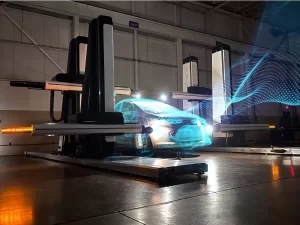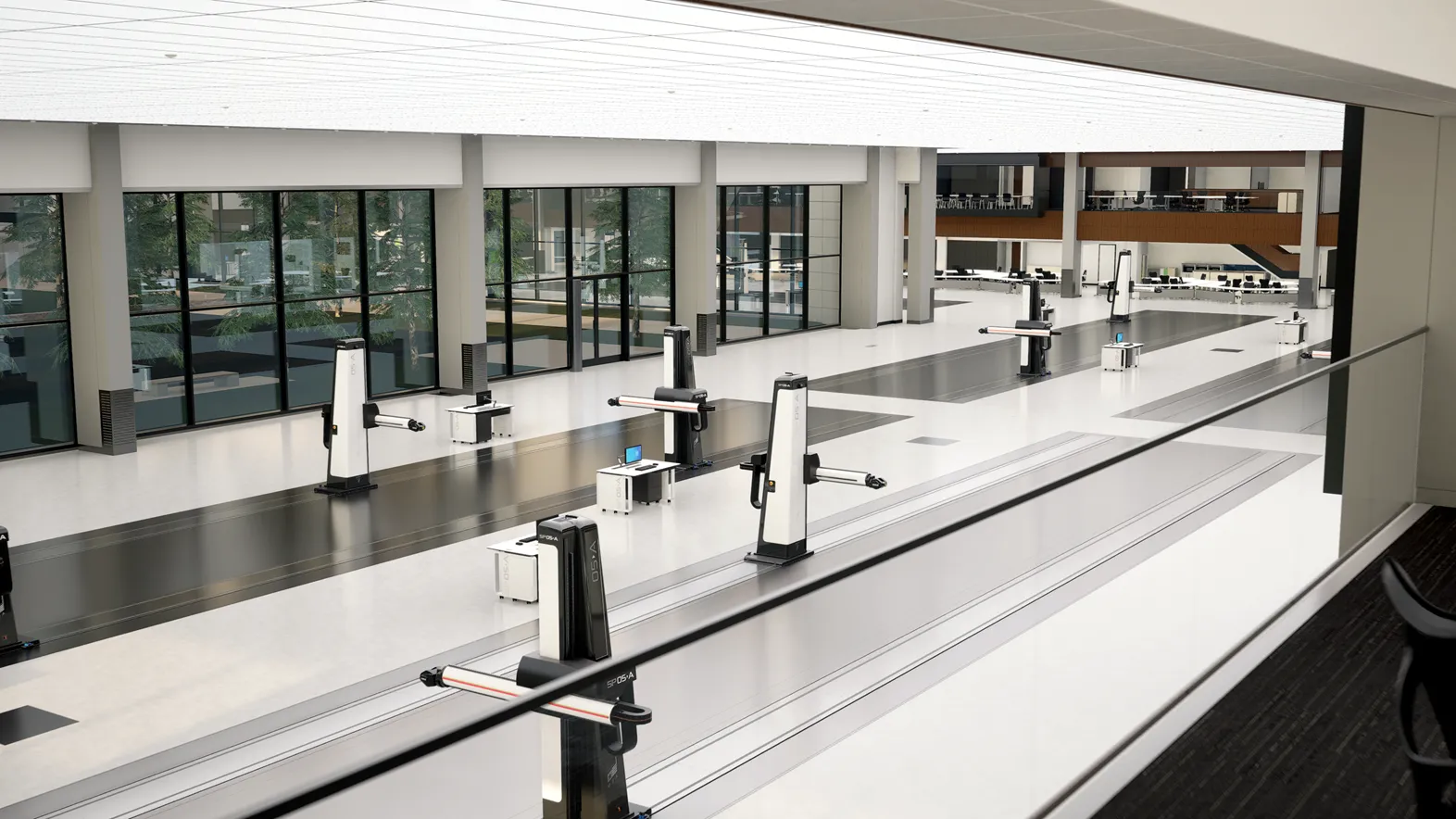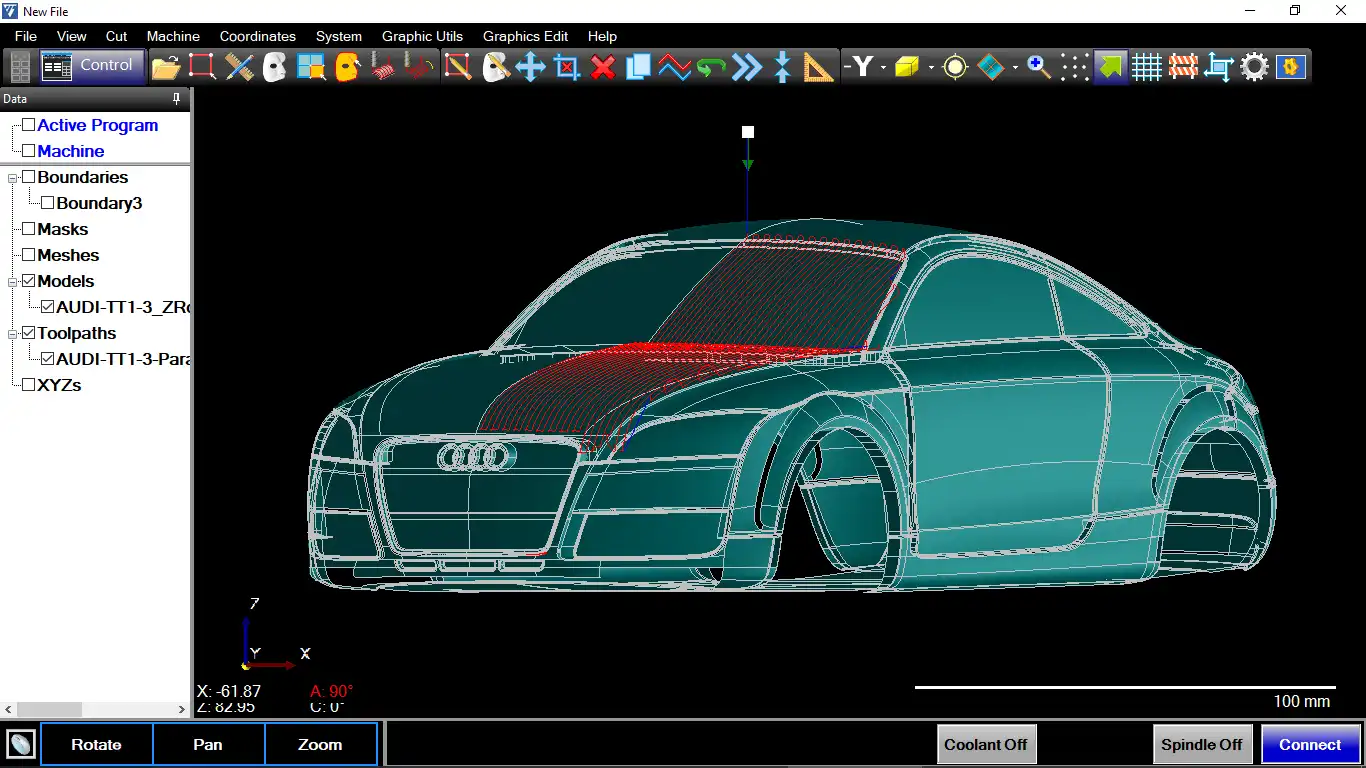This website uses cookies so that we can provide you with the best user experience possible. Cookie information is stored in your browser and performs functions such as recognizing you when you return to our website and helping our team to understand which sections of the website you find most interesting and useful. For complete information, please visit our Privacy Policy and Terms and Conditions pages.

About TARUS. The original Claymill™ and still the best.
TARUS revolutionized transportation design by inventing the world’s first Claymill™ in 1984, in partnership with General Motors.
It was unveiled with tremendous fanfare and brought to the Waldorf-Astoria for display at GM’s “Teamwork and Technology for Today and Tomorrow” event – still the largest display of GM technology in company history. TARUS clay mills were also showcased for their futuristic capability in EPCOT Center’s “World of Motion” attraction from the late 1980s through the early 1990s.
The TARUS Claymill™ created a new category in the machine tool business. It was the first in-studio, on-plate, portable, 5 Axis CNC milling machine produced for clay models that had full milling and scanning functionality. The TARUS name quickly became synonymous with clay modeling. Generations of automotive sculptors referred to clay milling CNC machines simply as a ‘TARUS’ or Claymill™.
Today, TARUS remains the preeminent global leader in cutting-edge clay milling machines and comprehensive car design studio solutions. TARUS currently builds the largest variety of machines with greatest performance, capability, ease-of-use, and reliability of any supplier.
Our comprehensive suite of car design studio solutions and accessories will compliment the most demanding requirements.
In addition to our standard offerings, TARUS specializes in building custom configurations to suit a customer’s unique needs and installation requirements.
Banner Image Credit: General Motors
The TARUS Advantage
TARUS is one of the few manufacturers of high-precision, large volume 5-axis CNC machines for heavy industry in America.
Our machines are legendary for their durability and toughness. Starting with raw materials, we build all of our machines in-house from scratch. A number of TARUS machines are running after almost 50 years of daily use. We build machines that will last for generations.
Our history building large, tough, precision machines for heavy industry has made our Claymills just as legendary. Some TARUS Claymills built in the 1980s are still running after 40 years of daily use – often outperforming some of our competitors’ current offerings.
When we build machines that are meant to last for generations, it starts with a strong, robust design build. Greater structural integrity means a more rigid Claymill, directly translating into the best surface finish in the industry.
A stronger, more robust structure also means higher performance. TARUS Claymills can handle a larger milling head, more powerful components, faster speeds, and provide a nearly silent operation.
Our heritage of building computer controls in-house was the basis for tremendous software innovation. The TARUS Claymill user interface was specifically built around the needs of modelers and sculptors. Our UI is renowned in design studios and widely regarded for its ease-of-use and functionality.
About TARUS - A History of Innovation
In celebration of 55 years in business, TARUS produced a video of our timeline below, highlighting our accomplishments and innovations.
1969 - TARUS is founded
TARUS Products, Inc. was established in 1969 by Douglas J Greig in his Warren, MI garage, building EDM servo controllers. It was one of the first electronic systems to automate control cycles of EDM electrode ram.
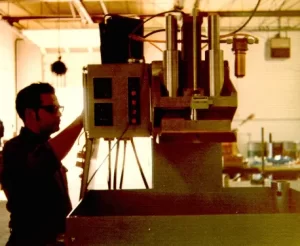
1971
TARUS continues upgrading EDM controls and power supplies for EDM retrofits, bringing generations of older machines into current performance specs.
Success with EDM control and retrofits allows expansion into a dedicated factory manufacturing complete EDM machines for mold makers.
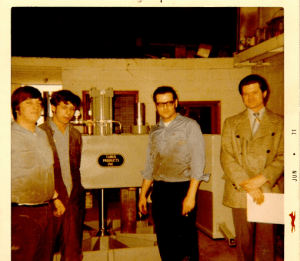
1974
TARUS builds larger, more complex EDM machines and power supplies for mold makers. This dual head EDM Machine and power supply system could accurately sink with two electrodes simultaneously..

1976
TARUS was the first company to create purpose-built deephole drilling (gundrilling) machines for mold makers. TARUS produces special gundrilling machines for drilling tube sheets and other models for drilling large rock boring bits. Being so well built, many operate today with retrofits and upgrades.
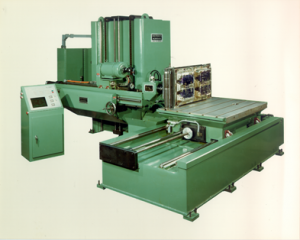
1979
TARUS revolutionized mold making by mass producing a modern, affordable copy milling machine called the TARUS Duplicator that was widely adopted in the industry. With retrofits and upgrades, many remain in use today..
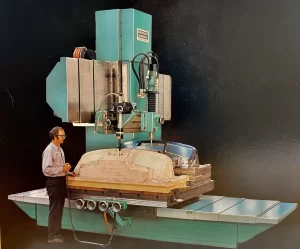
1980
TARUS developed its own CNC with TARUS tracer and tracer control integrated into the newly developed TARUS CNC
1980
TARUS CNC milling machines were sold to automobile mold, die, model and pattern shops throughout the Wisconsin to Toronto corridor, being the center of the automotive tooling industry in the western hemisphere. Being so well built, many operate today with retrofits and upgrades.
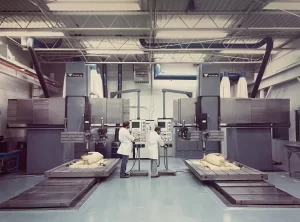
1980
Originally, TARUS software developers would write code in Assembler in consultation with application engineers, which was an arduous process.
Software developers usually didn’t fully understand machine applications, so a lot was squandered in this ineffective and time-consuming process.
TARUS developed a user-friendly programming utility called SPUD (Special Programming Utility for Doug), which changed everything. SPUD put a front-end code editor in the hands of TARUS employees who best understood actual machine applications.
SPUD unlocked creativity and saved time unleashing features on TARUS machines that were previously impossible. SPUD put TARUS at the forefront of machine capability and efficiency, giving it a distinct market advantage.
1981
TARUS introduces the TPI 8100 CNC which introduced a GUI two years before Apple introduced a GUI which put us light years ahead of the competition:
-High speed contour milling for mold and die makers
-Special version for gun drilling machines
-3D graphics with trackball user interface
-3D scanning with the new TARUS rracer
-Scanning of 2D drawings producing a 3D wireframe when combined
-Multiple presets, scaling, mirror, swap planes
-Built in hard drives
-Floppy drive storage and data transfer
-Serial link data transfer
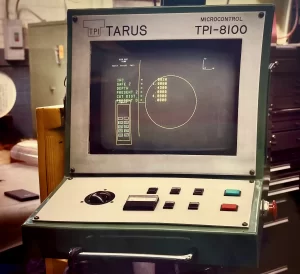
1982
Based on the success of TARUS CNC machines, TARUS began building computer servo-driven coordinate measuring machines (CMM) which share a GUI, allowing for seamless data exchange and user friendliness.
The majority of automobile body development in North America utilized TARUS CMMs for building fixtures and body-in-white.
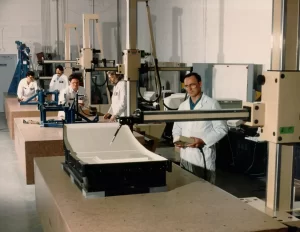
1983
TARUS develops its 3rd generation CNC with GUI, the 8300 CNC and SENTAR.
It would be difficult to overstate the impact SENTAR had on North American OEMs and their automotive supply base in moving them towards true digitization – many years before other industries embraced computers for data interchange and data translation.
The 8300 CNC featured better graphics measuring software for CMM and calibration software for CMM and CNC machine tools. File import and export features enabled TARUS to sell these controls as stand alone desks called SENTAR.
SENTAR was used to create CAM tool paths and import, export, translate and manipulate point and surface data from the numerous CAD and CAM systems in use at the time.
SENTAR was equipped with a variety of data transfer and storage media such as reel to reel tape, 10” floppies, 5” floppy and various cassette tape formats.
SENTAR was pivotal to the Auto Industry in Metro Detroit because, for the first time, virtually all tool and fixture makers had a computerized tool to translate and transfer data between each other, their customers, and the OEMs they served.
1984
General Motors collaborates with TARUS to develop a portable clay milling machine – the first ever purpose-built industrial claymilling machine in the world.
GM brings the TARUS Claymill to the Waldorf-Astoria for their annual shareholder meeting and GM’s “Teamwork and Technology for Today and Tomorrow” event – still the largest display of GM technology in company history. The Claymill is also featured at Disney’s EPCOT Center for its futuristic capability from the late 1980s through the early 1990s.
TARUS Claymills are quickly adopted industry-wide at Chrysler, Ford, ASC, Cars and Concepts, Modern Engineering, Pioneer and Aero Detroit, among several other early adopters. The TARUS name became synonymous with clay modeling. Generations of automotive sculptors referred to clay milling CNC machines as a ‘TARUS’ or ‘Claymill’.
TARUS creates a new category in the machine tool industry and forever changes transportation design.
For more details on this monumental industry shift, click here to learn about the origin and history of the Claymill.
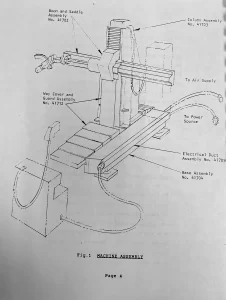
1986
TARUS began building its mighty roughing mills, first as copy milling machines and later as the RDUC heavy duty CNC machines.
At half the cost of European alternatives, with similar or better performance and superior local service, they became wildly popular with many still in use today.
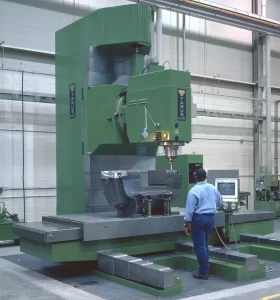
1987
TARUS builds large dual column 5-axis claymilling machines for several of the local engineering and design companies for milling and scanning full scale clay and foam models for the American car and heavy truck design studios.

1987
A large CMM customer base stretched the capacity of TARUS metrology department. TARUS developed a fully automatic calibration utility to streamline the process.
This software automatically drove the machine’s axes as needed for the laser interferometer to measure the machine’s mechanical and geometrical error and then applied error mapping compensation. To verify and further improve the volumetric accuracy of the machine, a B89 test using a lab certified ball bar and the machine’s measuring probe was performed.
Finally, a CMM calibration report was generated without manual data entry. TARUS then added this capability to our CNC control to calibrate other TARUS milling machines, improving their accuracy.
1989
Reflecting an industry shift, TARUS began building larger 5-axis bridge and gantry milling machines for mold, pattern and model makers using internally built milling heads and spindles.
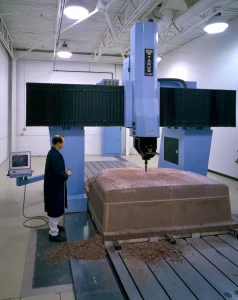
1990
TARUS developed one of the first carbon fiber composite measuring arms in-house for its CMM and MSM clay milling machines.
A lighter more sturdy arm allowed for larger CMM volume. Lower expansion coefficient and better thermal stability of the measuring arm provides substantial improvement of machine accuracy.

1991
TARUS integrates laser scanners into TARUS CNC, CMM, and Claymill machines allowing for rapid digitizing and inspection of 3D surfaces.
1996
TARUS introduced a bridge CMM with beams for the X, Y and Z axes fully constructed of carbon fiber composite material.
Very large CMM volumes were achieved at substantially lower cost.
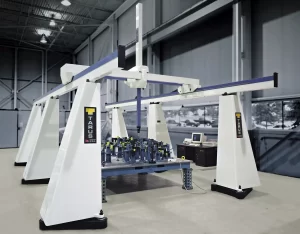
2001
TARUS began building 5-axis horizontal arm car model milling machines equipped with lift and rotary tables, bringing the new form factor into the mainstream.
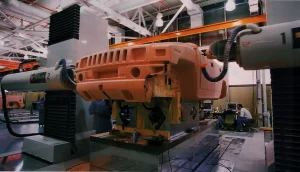
2003
TARUS built its first milling machines equipped with ETEL direct drive linear and torque motors, giving TARUS a head start knowledge in direct drive technology.
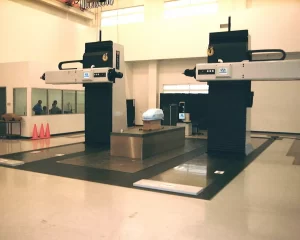
2007
TARUS began building 5-axis gundrilling machines with milling function for mold makers.
This dramatically simplified setup times, and enabled mold makers to design more efficient molds.
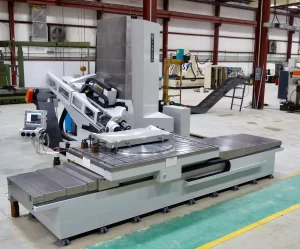
2009
TARUS introduces the MM5 linear motor clay model milling machines.
It was the first in-studio clay model milling machine to use linear motors, dramatically increasing the speed and acceleration, yet remained quiet and highly reliable.
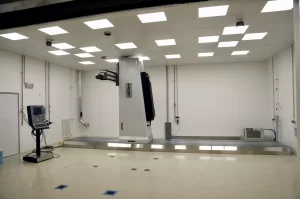
2010
Tubesheets in a nuclear power generation have up to 30,000 precision holes drilled by a gundrilling machine. This complex process requires drills to be installed and removed depending on the hole pattern which is an arduous, labor-intensive process.
TARUS introduced the DHMS 5-spindle BTA deephole drilling machine which allowed drills to be used together or separately in any combination at any time controlled by the CNC, which was a first in the industry.
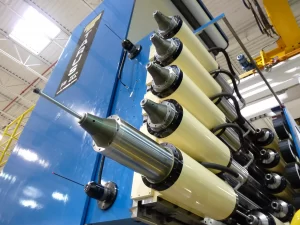
2015
After becoming frustrated with various ERP platforms that don’t address the needs of a complex manufacturing and service environment, TARUS begins a multi-million dollar commitment to build TPI SHOP ERP.
It dramatically transforms company profitability, operations, and decision making and becomes adopted by a number of outside customers.
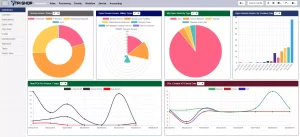
2017
In response to market feedback, especially in the mold and die industry, TARUS decides to offer the latest Heidenhain CNC option on TARUS milling and gundrilling machine models.
This shift brings new levels of contour milling surface quality, 5-axis accuracy, and automation to already robust TARUS machines.
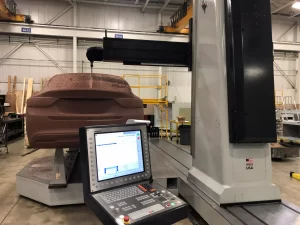
2019
To better address the needs of our aerospace and transportation design customers, the new TARUS CNC is introduced.
Based on Siemens Sinumerik One CNC, includes wireless user interface, TARUS Design Studio GUI with TPI CAM 5-axis CAM system for car design studios.
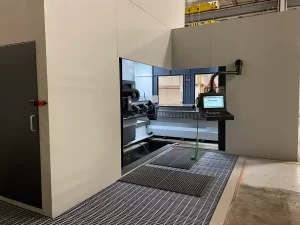
2020
TARUS’ legendary GUI known for user friendliness and functionality based on customer feedback expands a partnership with Siemens. This partnership merges the best of the TARUS CNC with extreme high performance and reliability of the Siemens Sinumerik One.
It includes a wireless user interface, TARUS Design Studio GUI with TPI CAM 5-axis system for car design studios. TARUS extends this partnership by offering GUI being developed for CNC applications beyond car design.
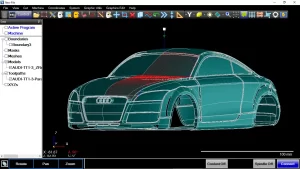
2020
TARUS updates the CM5P portable and MM5 fixed rail 5-axis clay milling machines, equipped with Heidenhain TNC 640 CNC or new Siemens-based TARUS CNC. These controls offer the highest performance available on a claymilling machine.
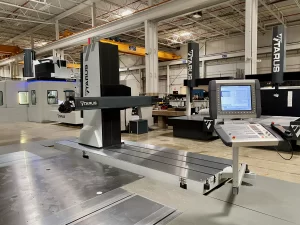
2021
TARUS joined the trend toward compact 5-axis gantry mills which do not require complex and costly foundations with the introduction of the 5GLC. TARUS’ 20 years of experience with linear motor direct drives means higher speed, better surface quality, and less wear.
Combined with Heidenhain and Siemens controls and the best spindles and automation, TARUS delivers the highest performance in the smallest footprint.
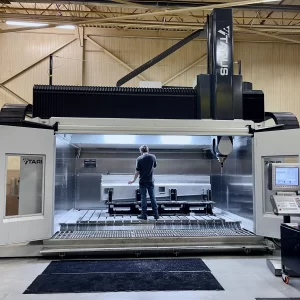
2021
TARUS customers asked for a lighter, quieter in-studio claymill with 5-axis milling and top CNC performance. The new TARUS LCMT greatly exceeded those goals.
The LCMT represents a collaboration with TARUS’ largest customer whose industrial designers refined the shape, while TARUS improved upon the structural integrity TARUS Claymills are legendary for. The result is quiet, beautiful, understated machine that will be in harmony with any car design studio environment.
Image Credit: General Motors.

2023
TARUS wins the 2023 “Manufacturer of the Year” from the Macomb County Business Awards. Macomb County sits at the global epicenter of Advanced Manufacturing known as ‘Automation Alley‘.
Receiving this recognition from peers who best understand advanced manufacturing is a tremendous honor for TARUS.

2024
As one of the first adopters of Siemens SINUMERIK ONE in the world, Siemens showcases TARUS on a global stage with a case study and white paper on our adoption of the SINUMERIK ONE and use in TARUS machines.
